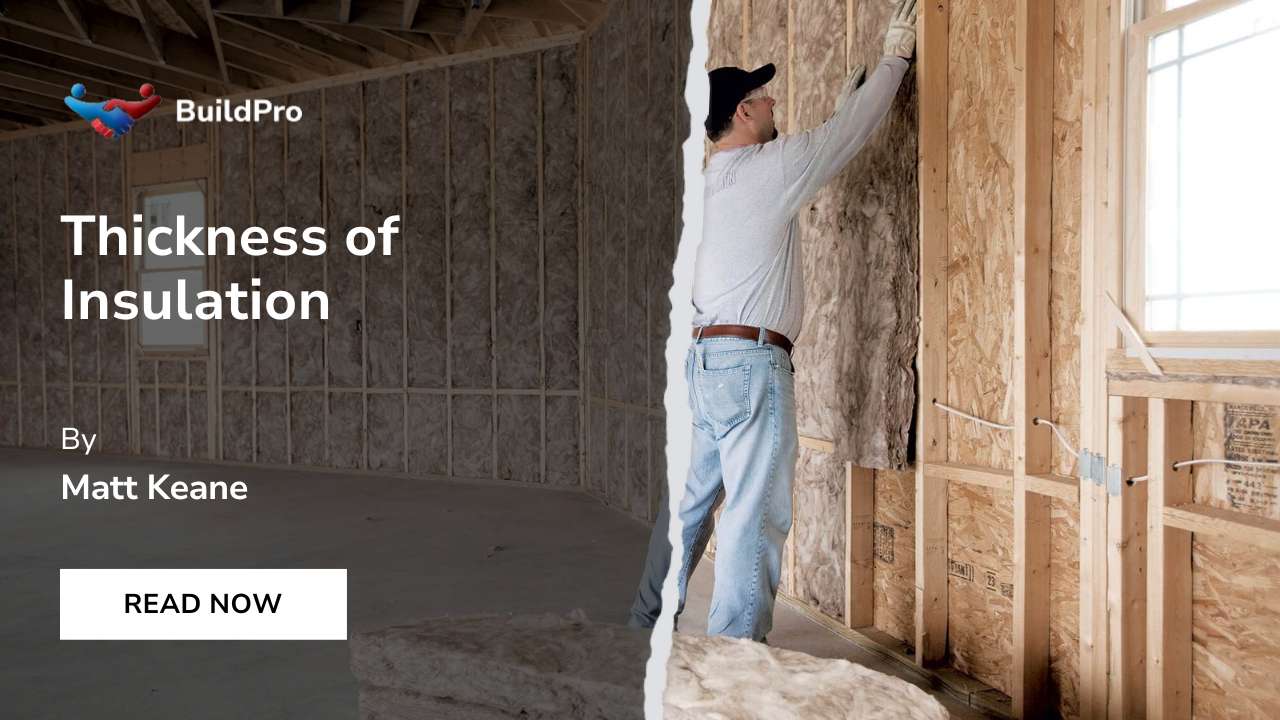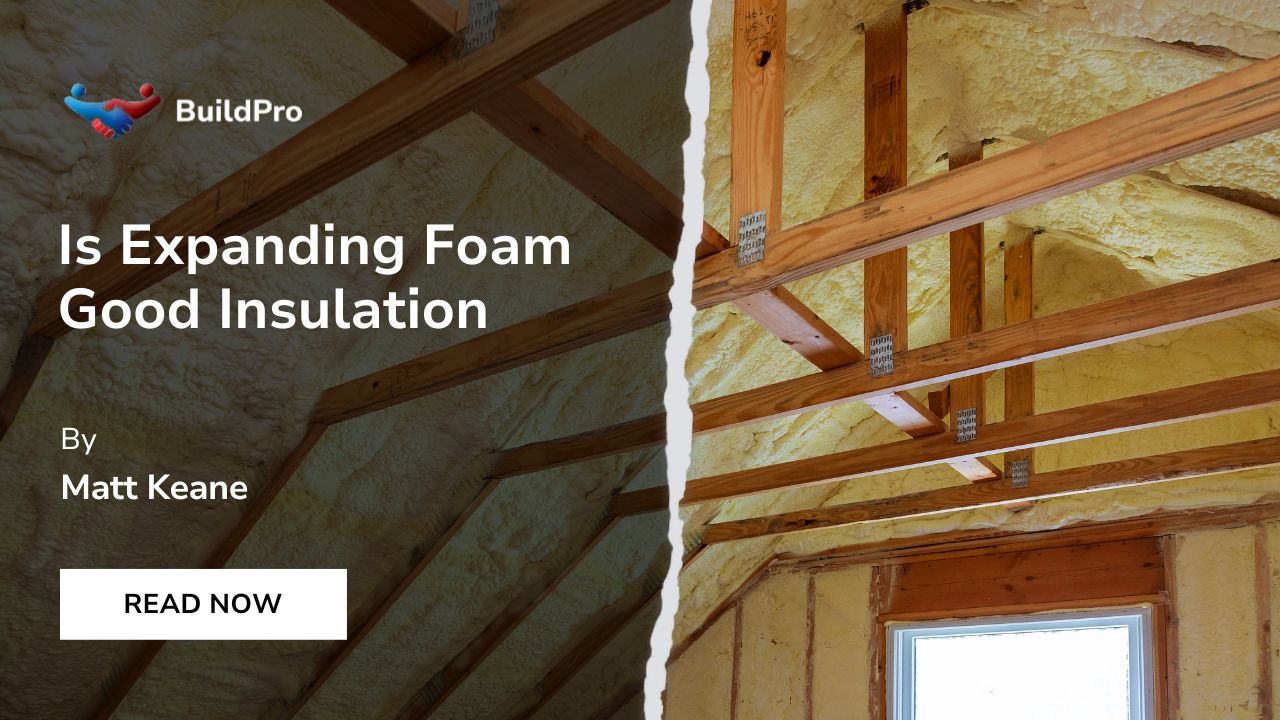Choosing the right thickness for insulation is a key decision in any building or renovation project. The appropriate thickness can vary depending on various factors, such as your climate, the type of building, and your energy efficiency goals. In this blog, we’ll explore the ins and outs of insulation thickness.
From understanding R-values to considering the specific needs of your space, we'll guide you through the crucial factors to determine the best insulation thickness for your project.
Whether you're insulating a new home, upgrading an old building, or simply curious about energy efficiency, this guide will provide you with the necessary insights to make an informed decision. Let’s dive into the mysteries of insulation thickness!
Understanding Insulation Thickness

When it comes to insulation thickness, there are different recommended guidelines for various parts of the home, such as the loft, walls, and attic. It's important to understand these recommendations in order to determine the best insulation thickness for your specific needs.
What Is the Recommended Thickness for Loft Insulation?

For loft insulation, we aim for a cosy blanket of about 270mm thick. The government tells us that this is the sweet spot to keep our homes warm and save on energy bills. We use materials like glass wool or rock wool, and we lay them down in two layers.
First, one layer between the joists, then another across them to cover all gaps. This way, heat can't sneak out through the roof.
We see many new houses with this thickness because it does a great job at stopping heat loss. Old houses might have less or none at all, so it's good to check your attic and add more if you need it.
Making sure your loft has proper insulation depth means your home stays warm without wasting energy or money.
What Thickness of Insulation Is Best for Walls?
When considering the best thickness of insulation for walls, it's important to note that the recommended thickness can vary depending on the type of wall and insulation material. For instance, if you have solid brick walls, a minimum thickness of 110mm of mineral wool insulation is recommended to meet building regulations and U-Value standards.
On the other hand, Celotex PIR used in walls is based on achieving the required U-value. These recommendations are crucial in ensuring energy efficiency and maintaining a comfortable living environment while adhering to construction standards.
What Thickness of Insulation Is Best for an Attic?
When it comes to attic insulation thickness, the government recommends a minimum of 270mm for new houses. This recommended thickness applies not only to insulation rolls and batts but also to fibreglass insulation placed between and across the joists.
Achieving this thickness is crucial to ensuring energy efficiency and cost savings, particularly in Irish homes where maintaining warmth during cold seasons is essential.
Moreover, for those considering mineral wool or other types of insulation material, it's important to note that achieving the target U-value of 0.27 W/m2K is vital for effective attic insulation.
Building Regulations for Roof Insulation Thickness

When considering the building regulations for roof insulation thickness, it's important to note that the government recommends a minimum of 270mm for attic insulation in new houses.
This thickness is also recommended for achieving the required U-value at ceiling and rafter levels, as well as for using insulation rolls and batts in new properties. These guidelines are crucial for enhancing energy efficiency and maintaining optimal thermal comfort in your home.
Additionally, the recommended thickness may vary based on different types of insulation material and specific building regulations in place, so it's essential to consult with professionals to ensure compliance.
Types of Insulation
Insulation comes in various forms, such as rolls and batts, solid insulation boards, and foam insulation. To find out more about the best type of insulation for your home, keep reading!
Insulation Rolls And Batts
Insulation rolls and batts come in various thicknesses, but for new properties, the recommended thickness is 270mm to meet building regulations. Using 270mm-thick insulation can help achieve the target U-value of 0.27 W/m2K, ensuring effective energy savings and a well-insulated home.
Fibreglass insulation at a thickness of 200mm is also recommended for attic insulation between and across the joists, providing optimal thermal conductivity for Irish homeowners.
Solid Insulation Boards
Solid insulation boards are a great option for adding insulation to your home. They are easy to install and provide excellent thermal performance, helping to keep your home warm in the winter and cool in the summer.
When you’re looking at solid insulation boards, consider Celotex PIR, which is recommended for walls based on achieving the required U-value. It’s important to choose the right thickness of solid insulation boards to ensure you meet building regulations and achieve optimal energy efficiency.
Moreover, always check the manufacturer's guidelines to find out the recommended thickness for your specific type of solid insulation board.
Foam insulation
From solid insulation boards to foam insulation, it's important to consider the best option for your home. When it comes to foam insulation, it offers a seamless and effective way of insulating spaces with its ability to expand and fill every nook and cranny.
This type of insulation provides an excellent air barrier, which can help prevent heat loss and reduce energy bills. Additionally, foam insulation has a high R-value per inch, making it a great choice for areas with limited space where maximum efficiency is required.
Foam insulation also helps create a more comfortable indoor environment by reducing drafts and noise infiltration. With its versatile application methods, foam insulation can be used in various areas, such as walls, lofts, and foundations.
Factors to Consider for the Best Insulation Thickness
When it comes to determining the best insulation thickness, factors such as the U-value for loft and roof insulation, the benefits of thicker insulation, potential issues with too much insulation, and the recommended thickness for pitched and flat roofs all play a crucial role in making an informed decision.
U-value For Loft And Roof Insulation
When it comes to loft and roof insulation, the U-value is an important factor to consider. The U-value measures how effective the insulation is at preventing heat loss. In Ireland, the building regulations require a U-value of 0.16 W/m2K for new or renovated roofs and a U-value of 0.16 W/m2K for new or renovated loft insulation.
To achieve this, it's recommended to have a thickness of 270mm for attic and roof insulation in new houses.
In addition, achieving the required U-value for ceiling-level insulation also requires a thickness of 270mm, as well as rafter-level insulation. Therefore, focusing on reaching the recommended thickness can help Irish homeowners meet the necessary U-values for their loft and roof insulations without any compromise.
Benefits Of Thicker Insulation
Thicker insulation brings benefits like improved energy efficiency and lower heating bills. It helps to maintain a comfortable temperature inside the house all year by keeping the heat in during the winter and out during the summer.
Additionally, thicker insulation can reduce noise from outside, making your home a quieter and more peaceful place to live.
Investing in thicker insulation is worth it, as it can lead to significant cost savings on heating and cooling bills over time. Thicker insulation also contributes to a more environmentally friendly home by reducing energy consumption.
This means you'll not only enjoy a more comfortable living environment but also make a positive impact on the planet.
Understanding these benefits should motivate homeowners to consider upgrading their current insulation for long-term comfort and savings.
Potential Issues With Too Much Insulation
Increasing insulation thickness beyond the recommended level can lead to condensation issues within the building envelope. Excessive insulation can trap moisture, leading to dampness and mould growth, which may compromise indoor air quality and pose health risks.
Additionally, over-insulating with certain materials, like foam insulation, can create airtight environments that may necessitate proper ventilation to prevent moisture buildup.
When considering insulation thickness, it's crucial to strike a balance between achieving energy efficiency and avoiding potential moisture-related problems. Adequate ventilation and professional guidance are essential in preventing these issues while ensuring optimal comfort and efficiency in your home.
Recommended Thickness For Pitched And Flat Roofs
- When insulating flat roofs, it's recommended to use a minimum thickness of 120mm of Celotex PIR insulation to meet the required U-value.
- By using at least 120mm of Celotex PIR insulation for flat roofs, homeowners can effectively insulate their homes and adhere to building regulations.
- To ensure sufficient thermal performance in flat roofs, a minimum thickness of 120mm of Celotex PIR insulation should be used.
- Adequate insulation thickness is essential for both pitched and flat roofs to enhance energy efficiency and maintain optimal comfort levels within the home.
- Increasing the thickness beyond the recommended levels can lead to diminishing returns in terms of energy savings and may not provide significant additional benefits.
Final Thoughts!
The best insulation thickness for different areas of your home depends on building regulations and the type of insulation material. The recommended thickness ensures practical and efficient heat retention.
Have you checked if your current insulation meets these recommendations? Consider taking action to improve your home's energy efficiency based on this information. Implementing these strategies can lead to significant improvements in maintaining a comfortable indoor temperature while saving on energy costs.
For those looking to enhance their home’s insulation or undertake any renovation project, remember that choosing the right professional help is crucial. BuildPro offers a smooth connection to experienced tradesmen for all your home improvement needs, from design to construction. Whether you're planning a home renovation, extension, or new build, BuildPro can help you connect with the right professionals. Visit our website to get started on your project with the best in the business and transform your home today!
















